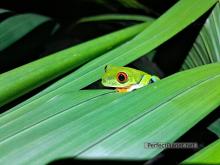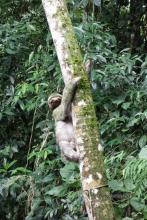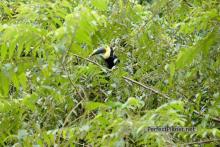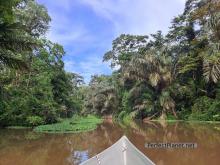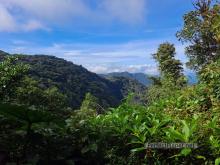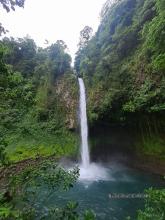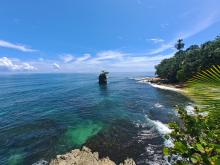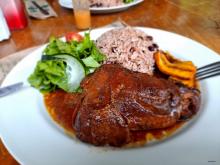Costa Rica. Welcome to this tropical paradise for nature lovers where adventure is guaranteed.
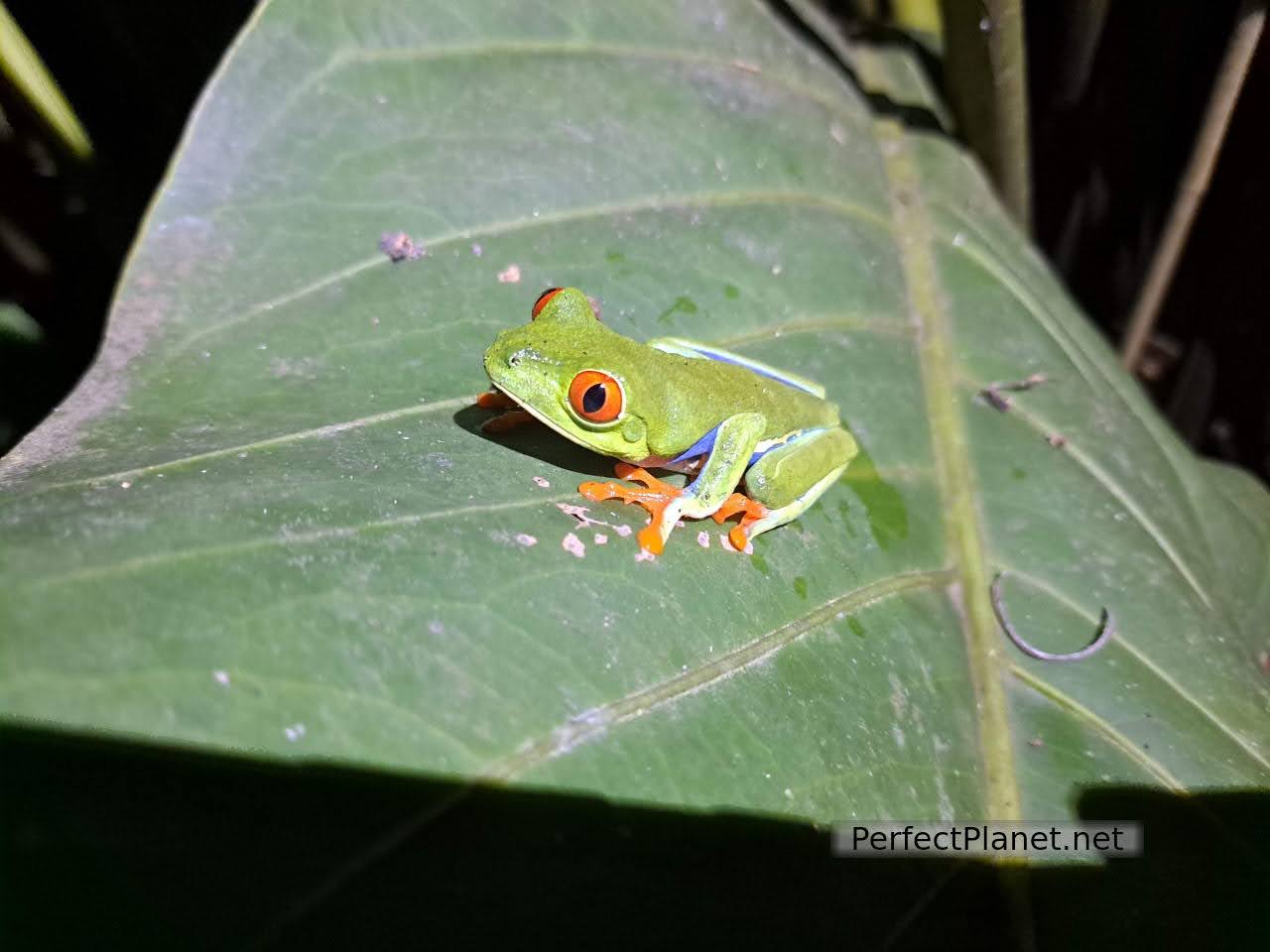
Red eye green frog
Get lost in the cloud forest, enjoy paradisiacal beaches, learn about the indigenous Tico and Afro-Caribbean culture, discover the aroma of the coffee plantations, visit natural parks with green mountains and volcanoes, go surfing, rafting, zip-lining... Costa Rica promises fun and nature, Pura Vida!
Visa
Citizens of the America and most of Europe, including Spain, do not need a visa for stays of less than 90 days.
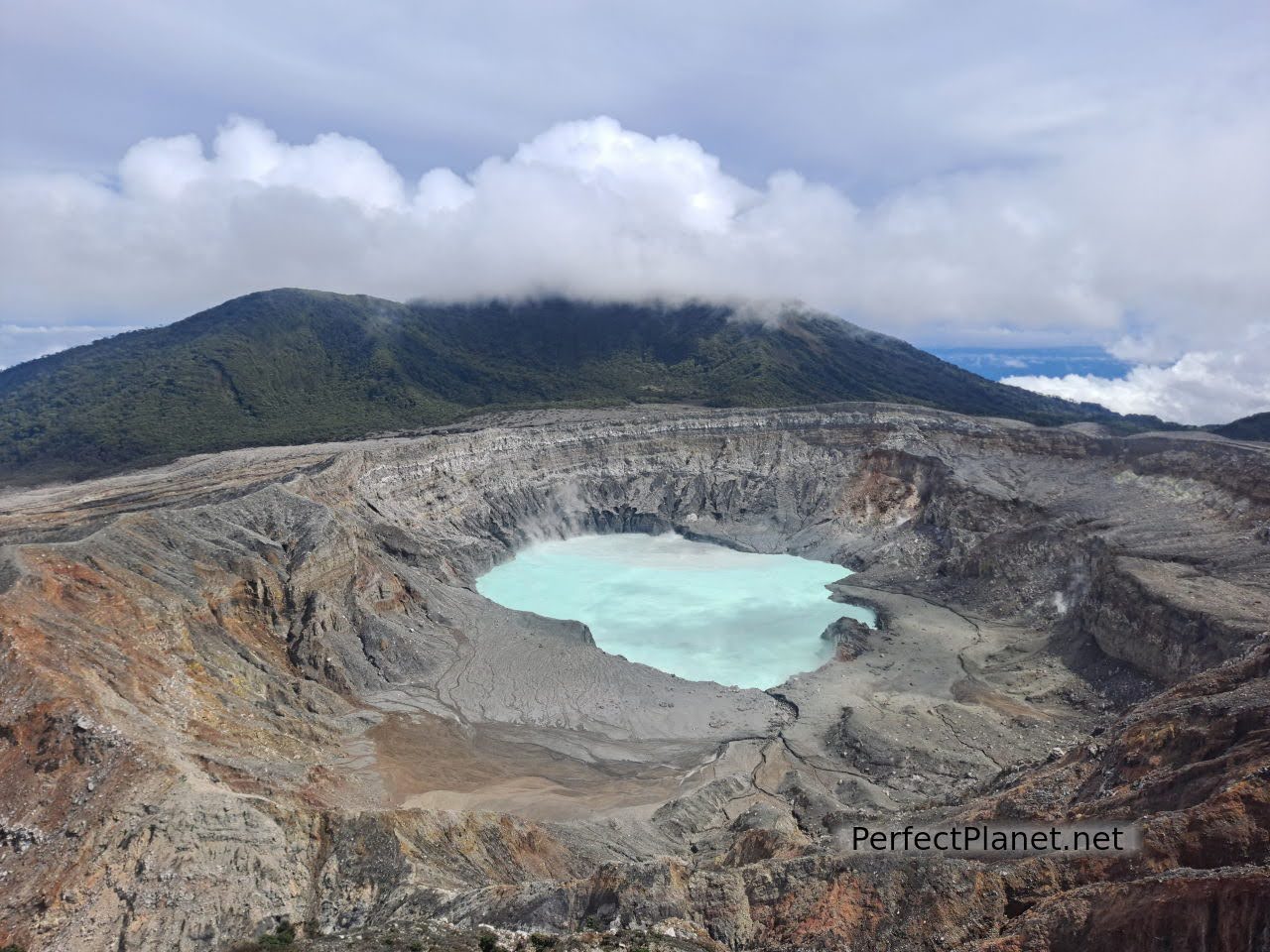
Poás volcano
Money
The official currency is the colón and the dollar (1.54€=1.500 COP) (1$=615 colones).
The dollar is mainly used for tourism, accommodation, restaurants and/or excursions, although you can use only colones for the duration of your stay.
There are ATMs in the more touristy towns and cities, but be sure to check before arriving in certain areas to make sure you have enough cash on you. When using ATMs, it is advisable to find out the minimum commissions per operation beforehand, as although the exchange rate is good, you may be in for surprises. To avoid surprises, we recommend using travel cards such as Vivid or Revolut, for more information follow this link.
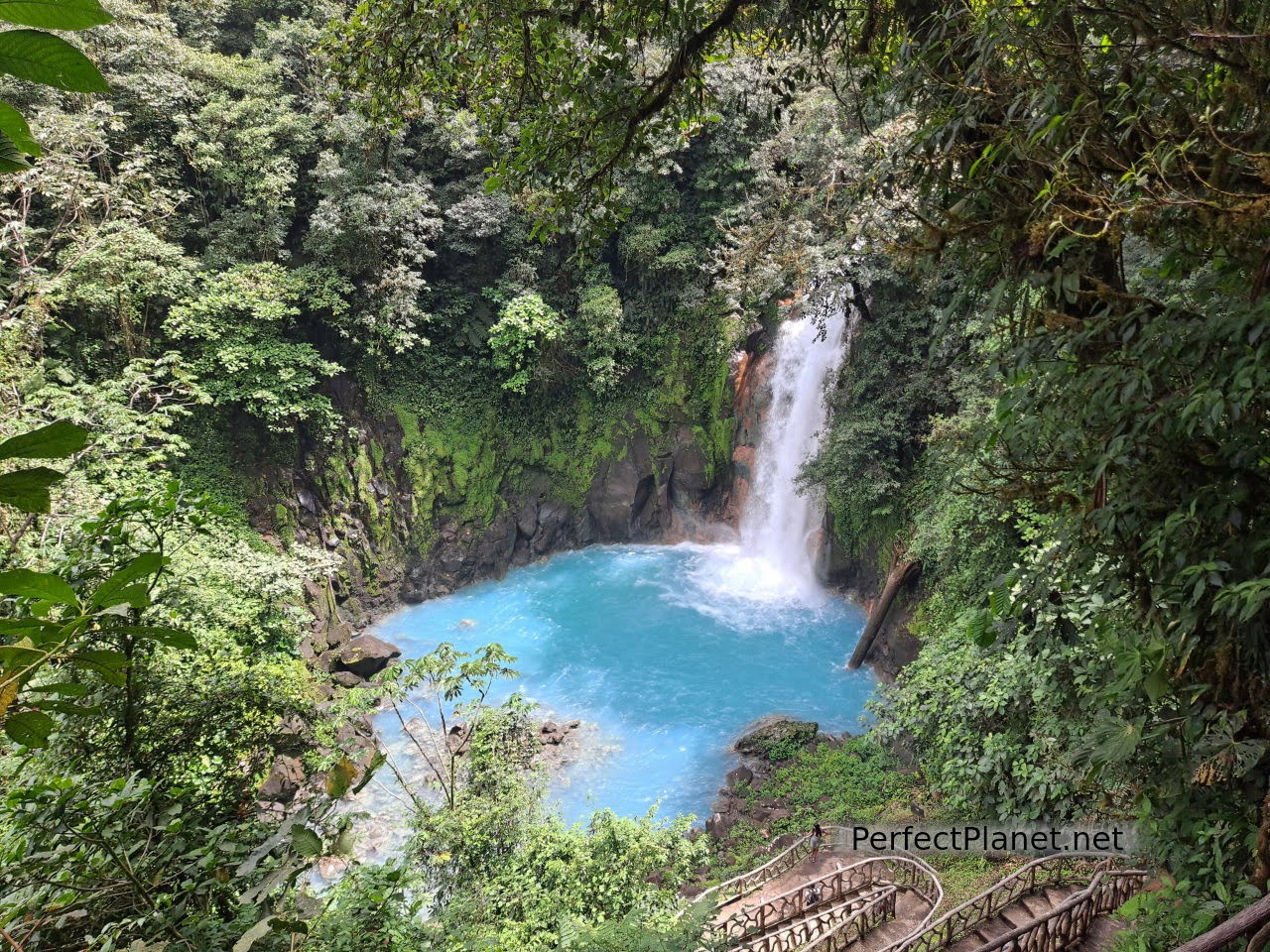
Celeste river waterfall
Payment by credit card is accepted in a large number of establishments, although it is advisable to ask if there is a commission on card payments. Remember that often the prices on the cards are without VAT (13%) and without service commission (10%).
It is important to know which is the best bank to withdraw money, for us Banco de Costa Rica (BCR) did not give us any kind of problem, but Banco Nacional charged us a commission.
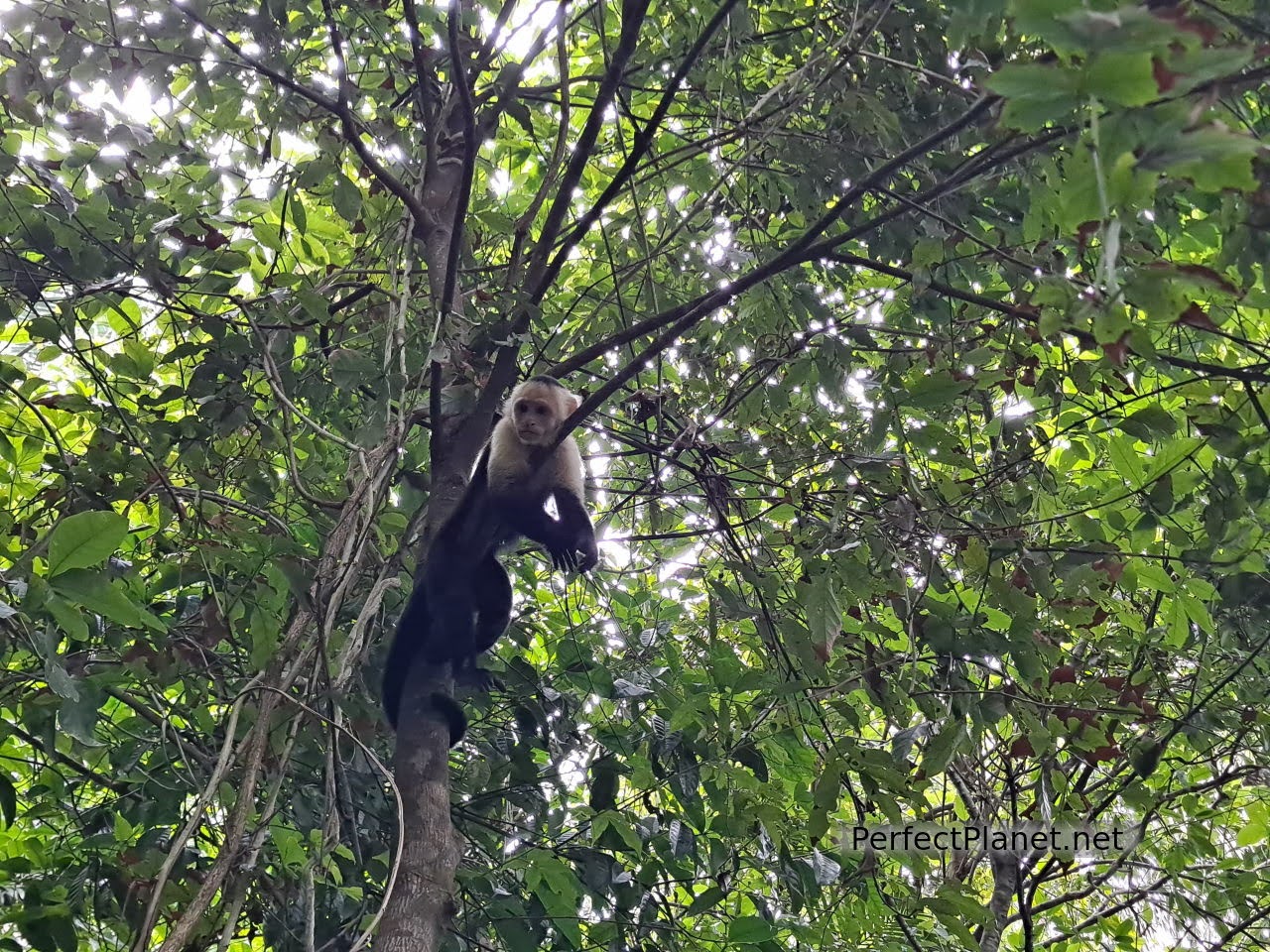
Capuchin monkey
Language
The official language is Spanish, although it is easy to communicate in English in the more touristy areas.
Curiosities. In the province of Limón they have their own language, a Creole English brought to Costa Rica by Jamaican immigrants who arrived in the 19th century to work on the railway lines. They use expressions like "tuanis" which means too nice.
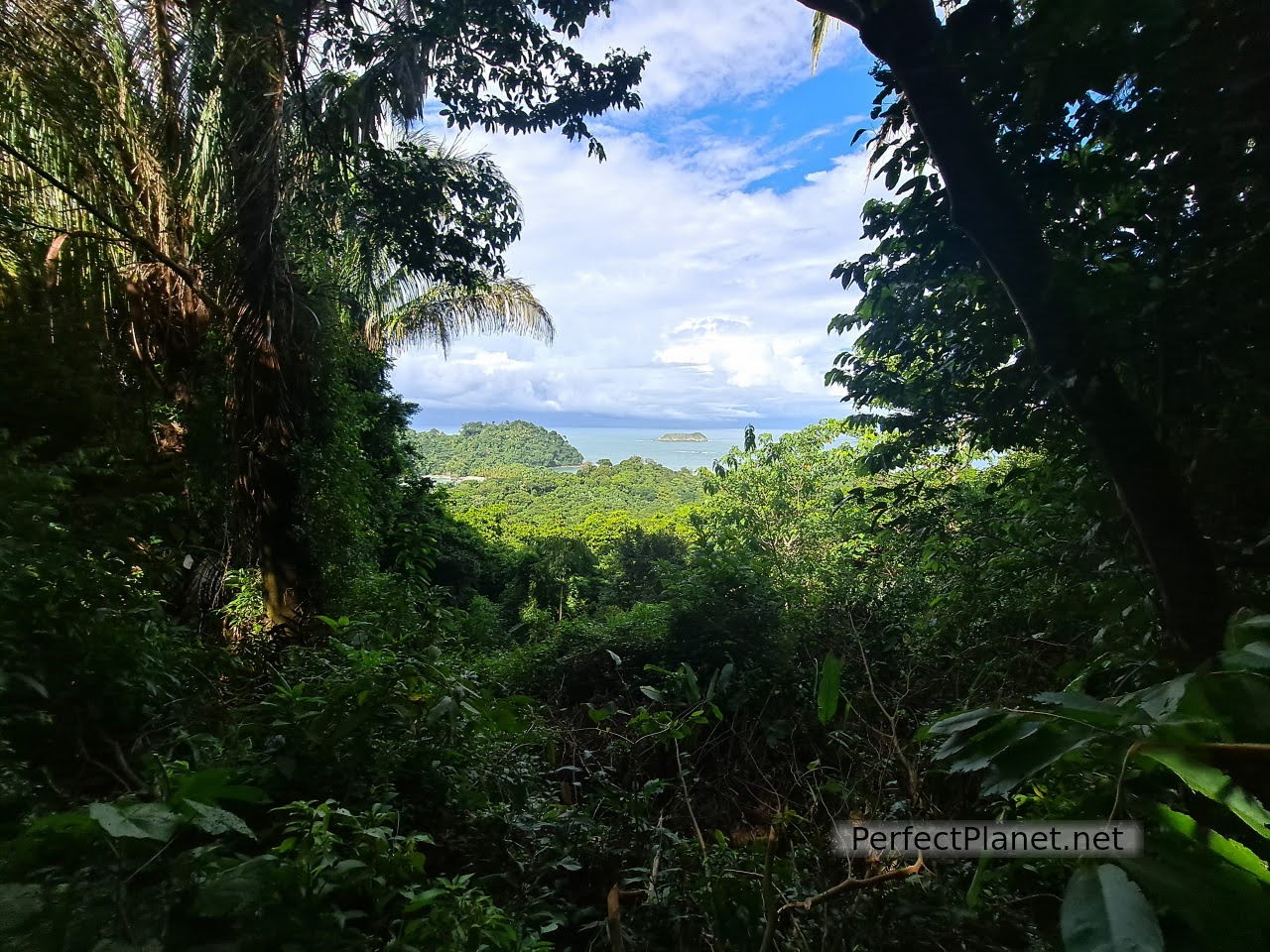
Manuel Antonio National Park
Transport
Car.The most comfortable way to get around the country is to rent a car, especially to visit the northern area and the Pacific coast where it is more difficult to get around by bus.
We rented a car (as the Ticos say) with the company Green Motion and had no problems at all. They have two main offices, one in Alajuela (very close to the airport with free transfer, closes at 22:00) and another one in the centre of San José (in Paseo de Colón, closes at 17:00).
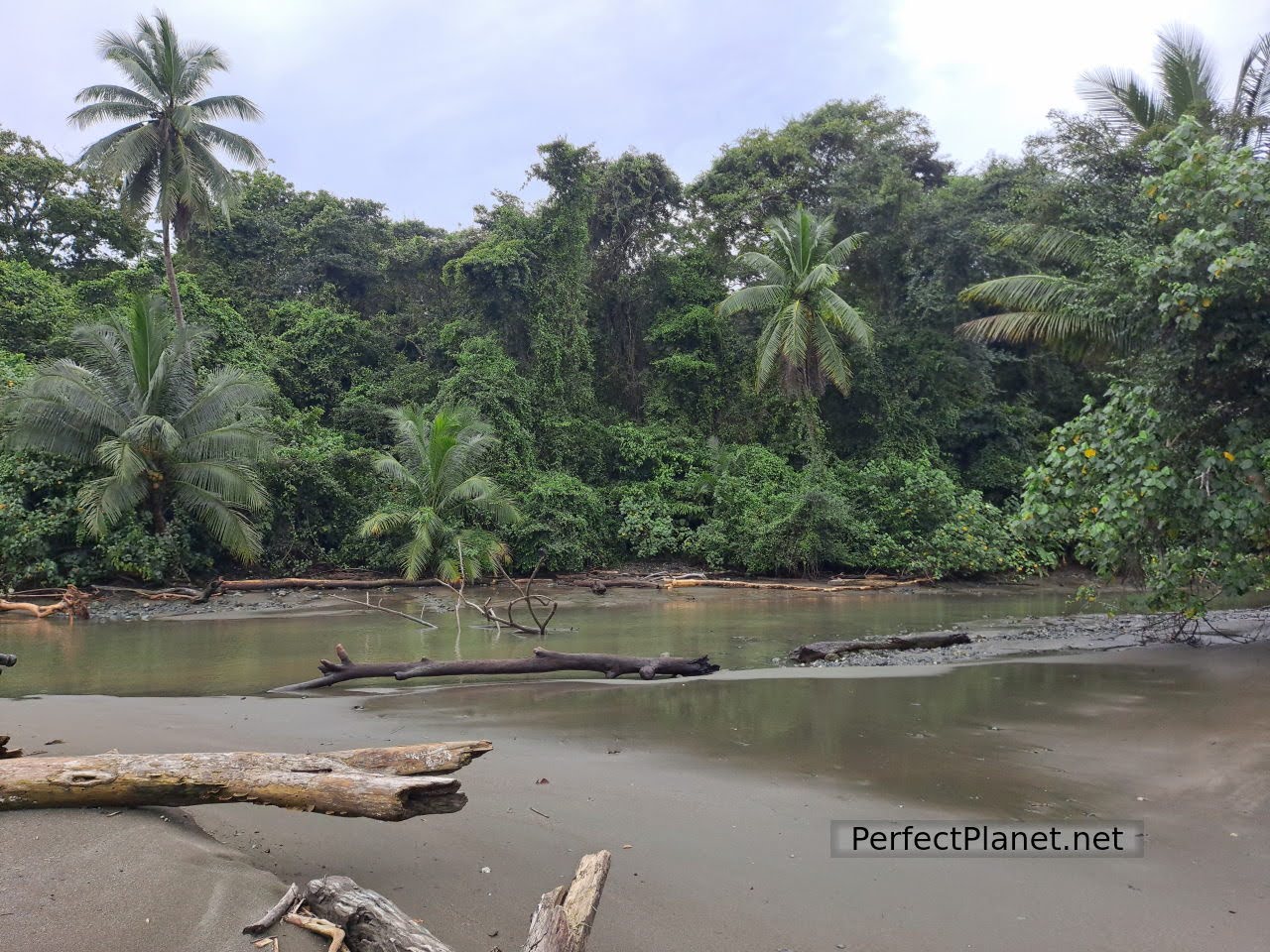
Corcovado National Park
When comparing with other rental companies we realised that the excesses were very high, so to avoid complications we rented an SUV with full insurance including second driver and navigator. The price for twelve days (we did the rest of the trip by bus) was $478.
Remember to book well in advance because as you get closer to the date of your trip, car prices go up and supply goes down.
When booking, use a Vivid or Revolut card as the exchange rate with a normal Visa card is not favourable.
In the confirmation email that Green Motion sends you, they tell you that they will pick you up at the airport (you have to inform them of your flight number beforehand), but this is not entirely true as you have to call them when you arrive at the airport.
Tip, if you don't have a mobile phone card to operate in Costa Rica, you can connect and call by whatsapp from inside the airport (where there is free wifi for three hours) or from a bar located on the right hand side as you leave the terminal.
As we couldn't get in touch with the rental company, we were helped by a driver from another company who had direct contact with Green Motion, called them and they came to pick us up. Green Motion is also known as Toyota.
Refuelling. There are many petrol stations throughout the country, although it is advisable to have a full tank to avoid problems. The price of a litre of petrol is around 956 colones/litre and does not vary between the different companies operating in Costa Rica.
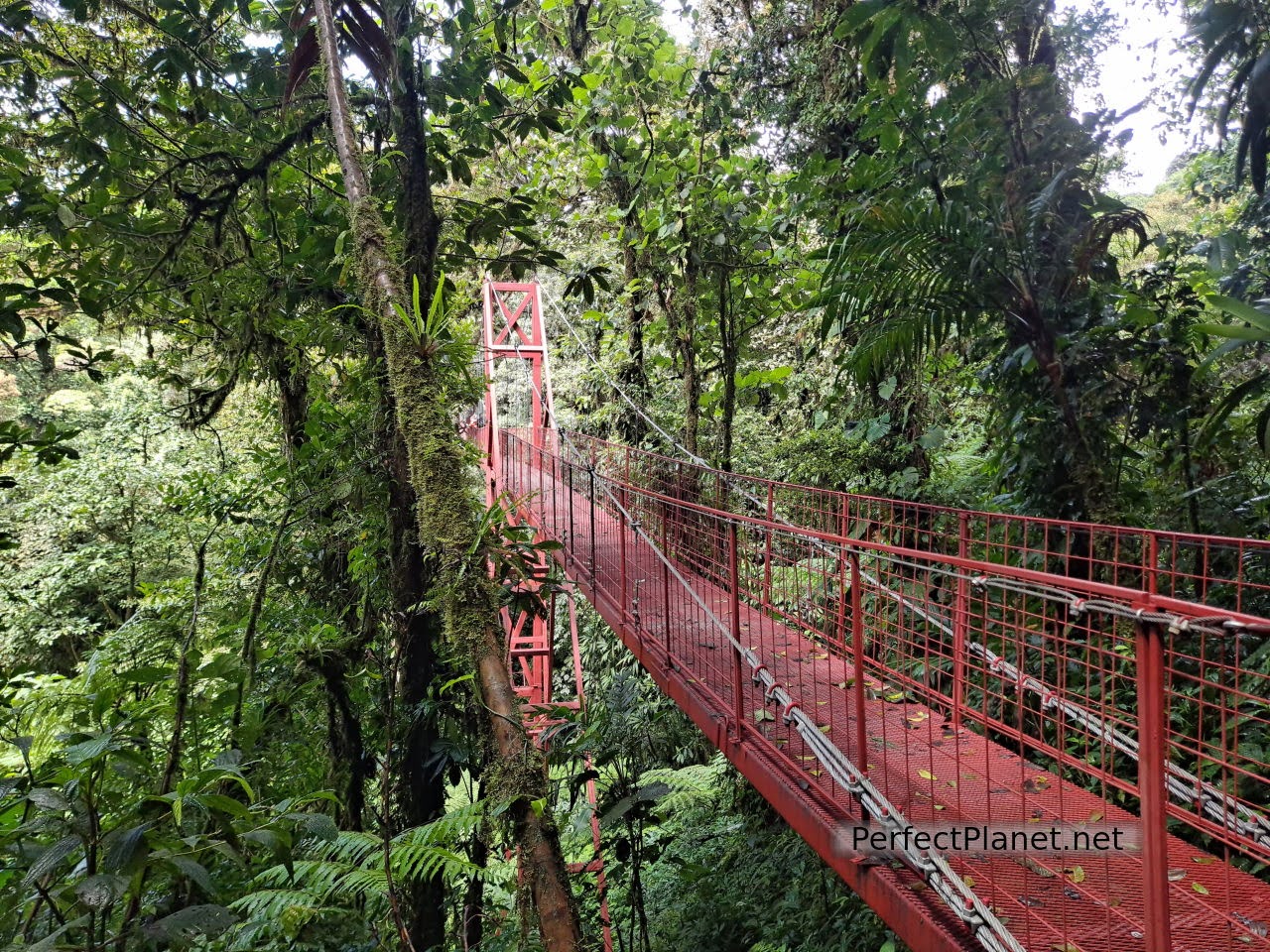
Suspension bridge
Bus. The national bus network works very well on the Caribbean coast and is very cheap; we did the north and Pacific coast by rental car and the Caribbean by public bus.
Tickets are in colones, best in small notes. Some buses accept dollars but the exchange rate is usually very bad.
Depending on your destination in San José you will have to go to one bus station or another. The station depends on the company they operate with, for example MEPE arrives at Terminal Atlántico Norte and Buses Caribeños goes to Terminal del Caribe. Buses to Tortuguero leave from Terminal del Caribe, but those arriving directly from Cahuita arrive at Terminal Norte.
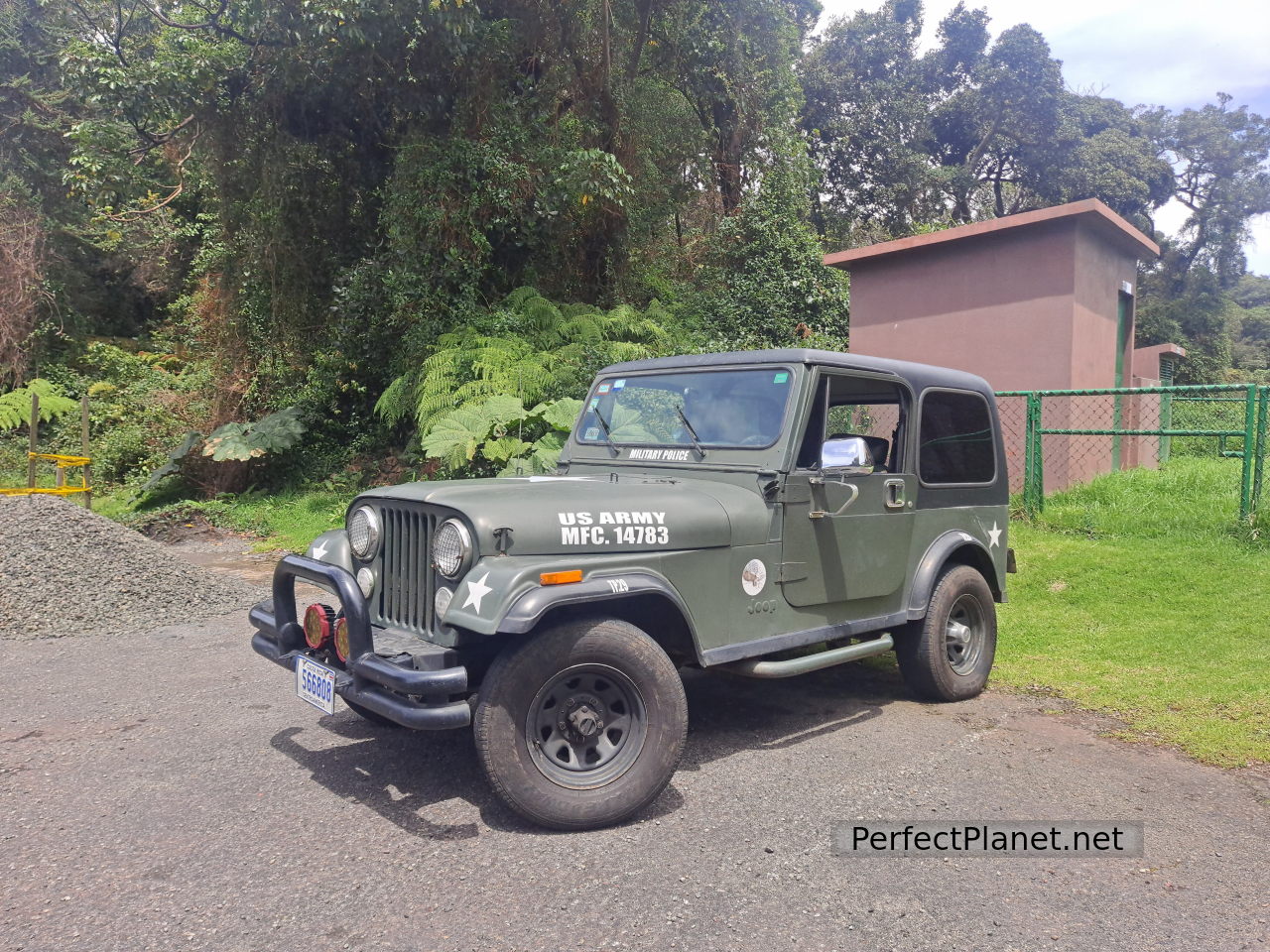
Jeep
By air. There are about 15 airports in Costa Rica, with international airports such as Liberia, Limon and San Jose and smaller airports such as Tortuguero and Drake with domestic flights.
The airlines that usually operate domestic flights are Skyway, Sansa, Aerobell and Aero Caribe.
Planes are fast but not cheap, so if you're not in a hurry it's best to use a rental car or bus.
Boat. To get between some parts of the country, you'll need a boat. For example, to reach the town of Tortuguero, which is located in an area inaccessible by road. Its beautiful canals are accessible by public and private boats, with or without motor.
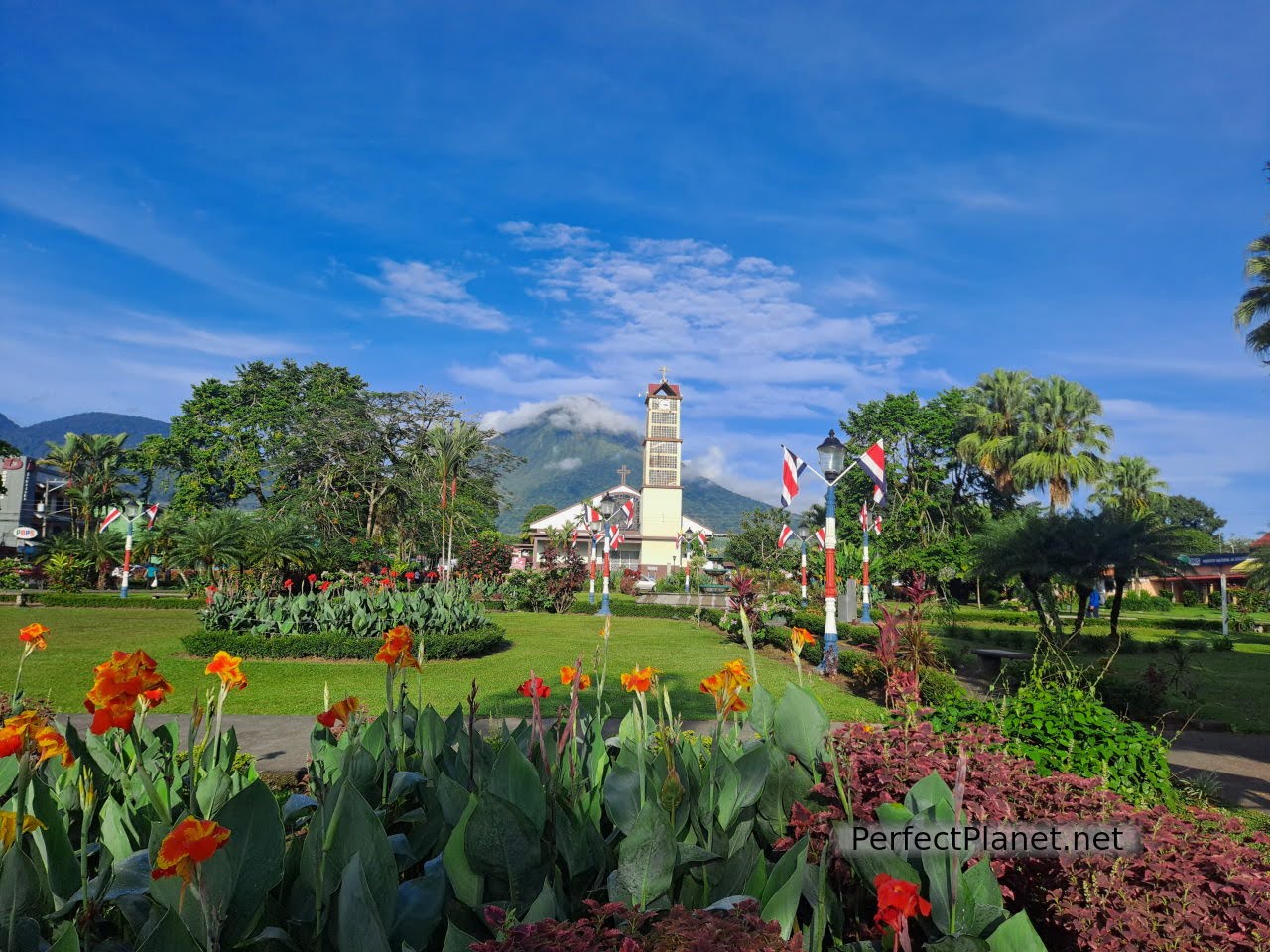
Arenal volcano
If you don't have a car, a great option for getting from Tortuguero to Limón is to take a private boat (for tourists) which, although more expensive (35$/pax) than the public bus, is faster and the views are unforgettable (you can see caimans, crocodiles, turtles, etc.). We'll tell you more about this later.
You also have the option of going by boat from Sierpe to Drake Bay, although in this case if you have a 4x4 you can also go by road. Since 2021 several bridges have been built to facilitate access by land, although in September 2022 one of them had already collapsed.
Train. Although the train was built at the end of the 19th century to facilitate the transport of goods from San José to the port of Limón, it ceased operating in the 1990s. Currently only trains run between Heredia, San José and Cartago (the former capital of Costa Rica).
Taxi. As in other countries, there are pirate taxis. Official taxis are red with yellow triangular stickers on the doors and roof, or orange if you are at the airport. Always ask them to use the meter.
Taxis are quite expensive so everyone recommends using the UBER service. Remember to download the UBER app before entering the country. We didn't and couldn't use it.
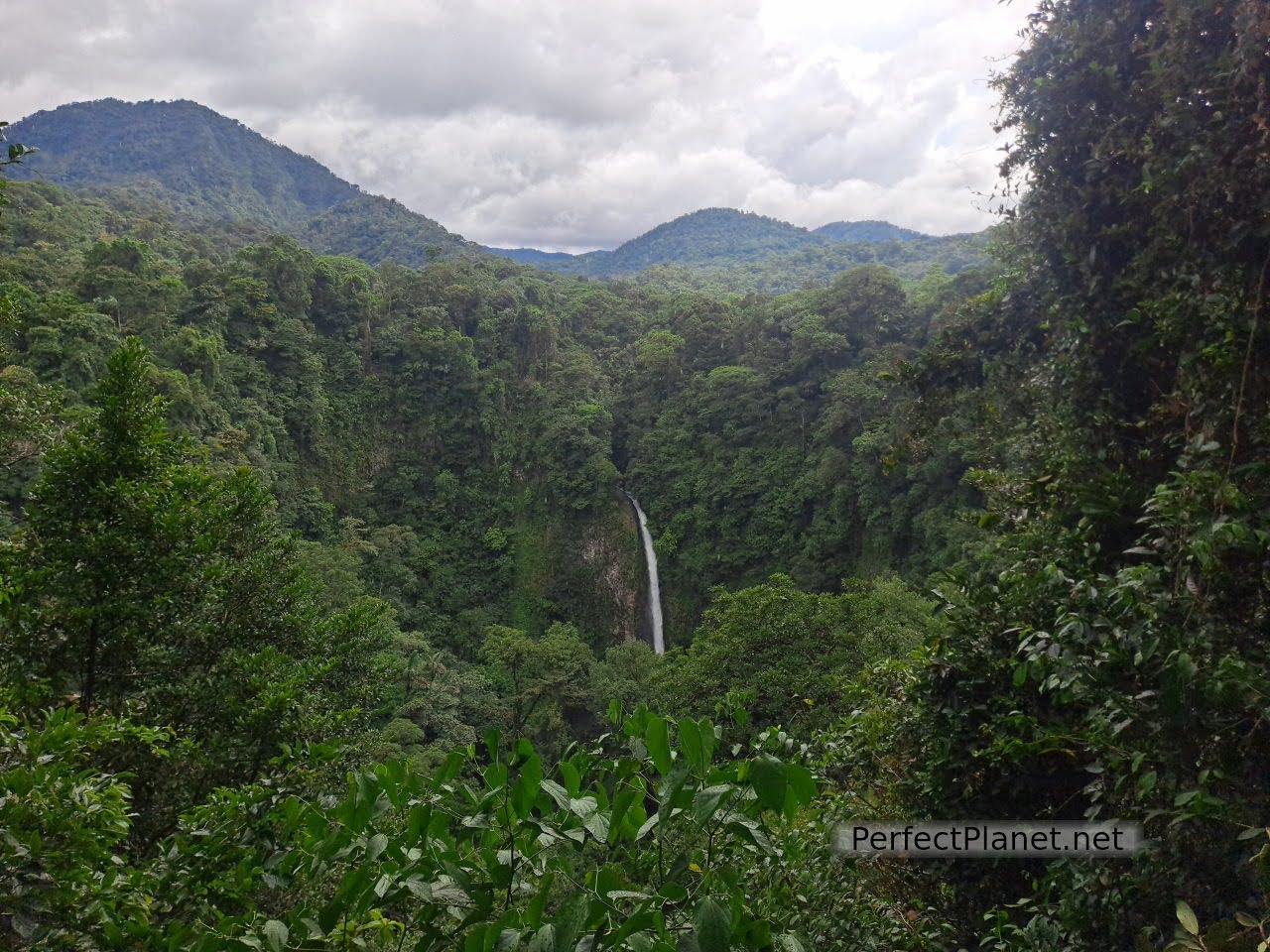
La Fortuna waterfall
Acommodation
In Costa Rica there are options for all budgets. From incredible lodges in the middle of the jungle at impossible prices to cheap hostels with shared rooms and bathrooms. In fact, this is one of the things that surprised us the most about this trip, as the standard of accommodation is very good and they tend to be good value for money.
If you have a rented car it is very important that your accommodation has parking to avoid any surprises.
We made all our bookings with Booking. Although we went in low season, it's best to book in advance, all with free cancellation, which allows you more freedom to move around the country.
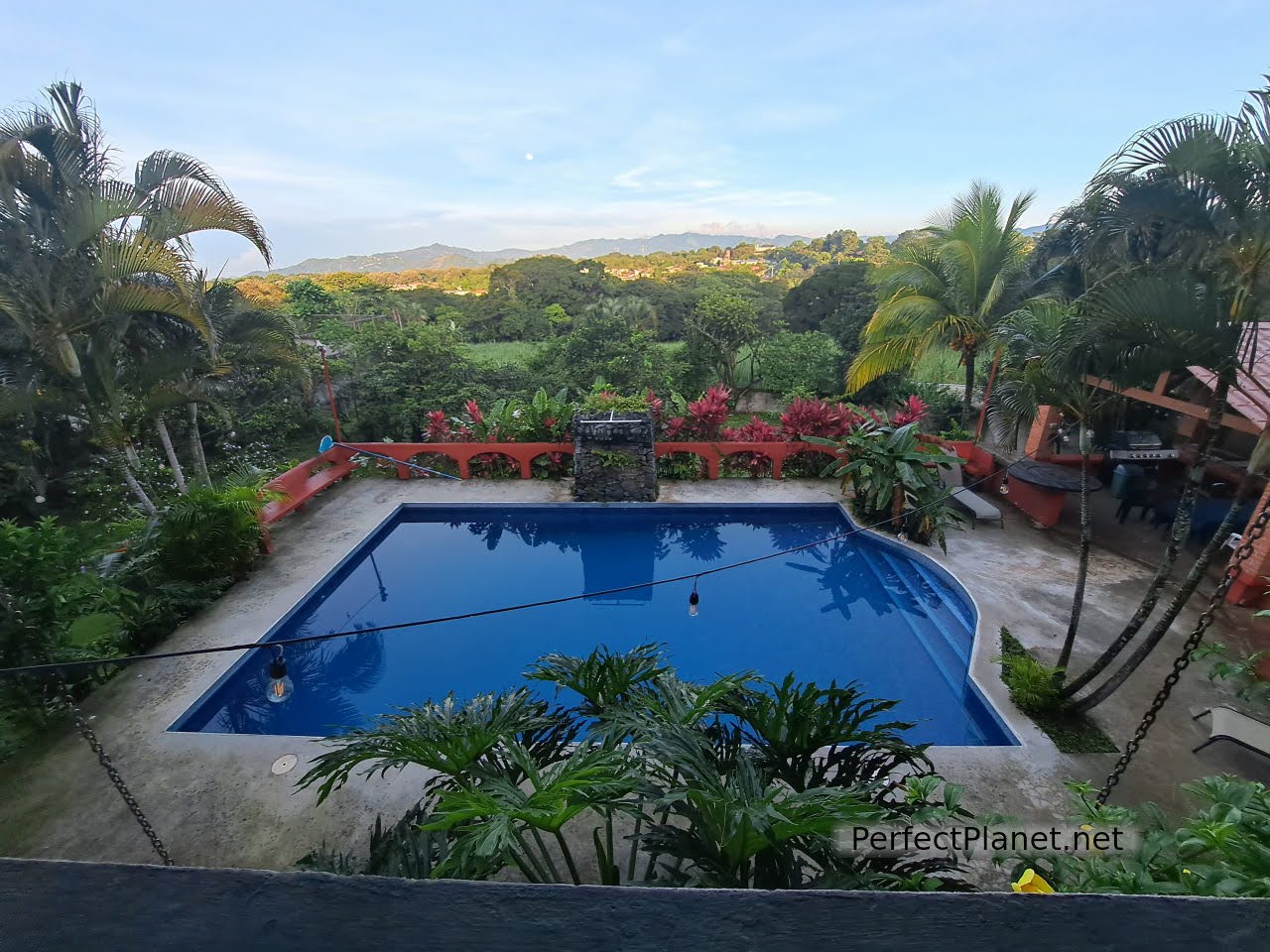
Uruka Lodge
Recommendations. Of the accommodations we enjoyed in Costa Rica we highlight hotels such as Teva Hotel & Jungle Reserve in Manuel Antonio, Miss Miriam cabins in Tortuguero, Cabinas Cahuita in Cahuita, Hotel Ecological Inn in San Jose or Corcovado & Drake Inn in Drake Bay, and other simpler ones such as Uruka Lodge in Alajuela, Posada Rio Celeste In in Rio Celeste or Yubarta Lodge in Uvita.
All of them with swimming pool and several of them with breakfast included. In the daily summary we tell you more about these wonderful places.
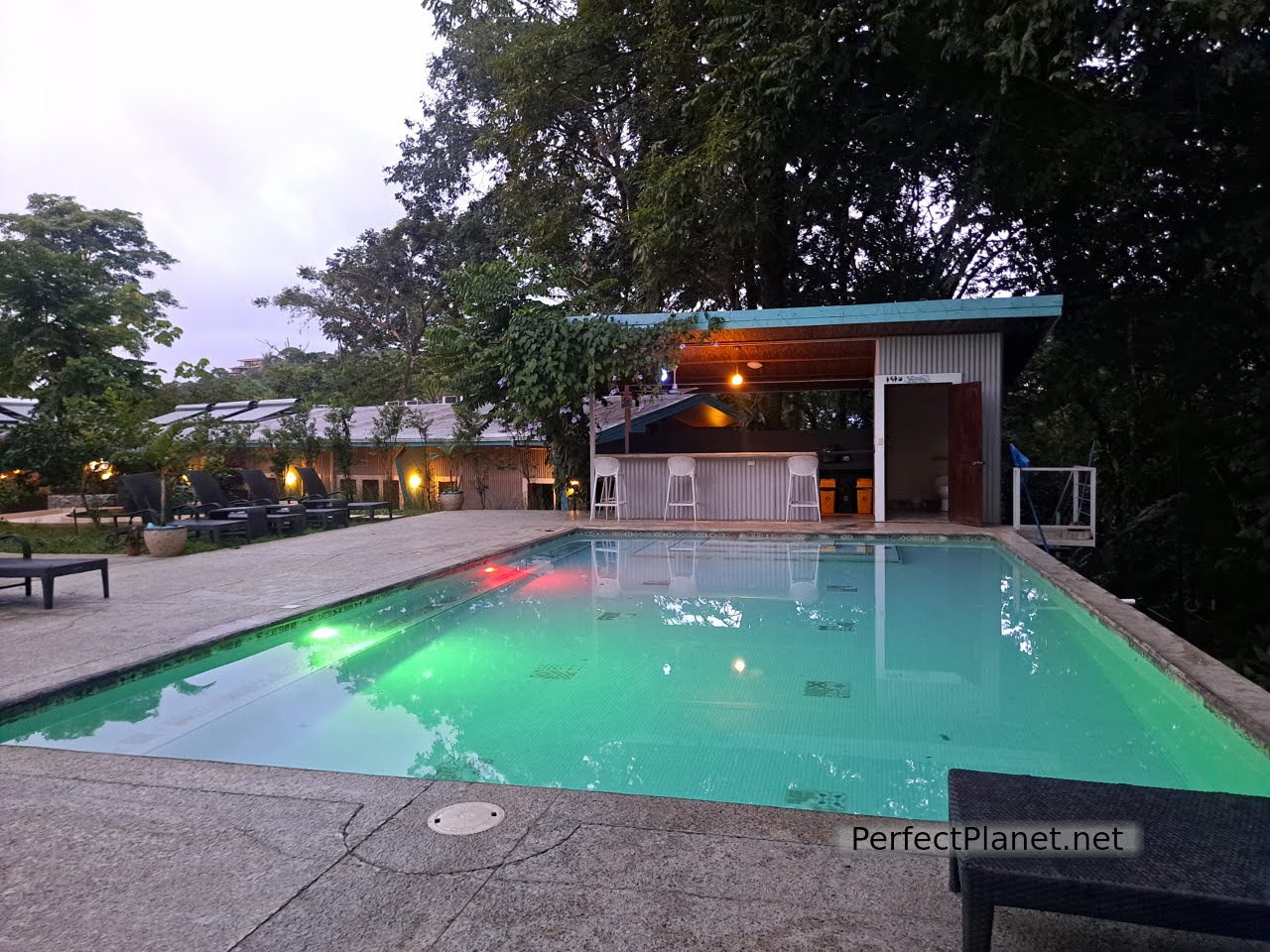
Teva Hotel
Health
Before you start your trip, always contact the international disease service. Don't forget a first aid kit with the essentials: medicines, betadine, antibiotic ointment, syringes, frontal, bandages, plasters, scissors, mosquito net, mosquito repellent, sun cream.
Although Costa Rica is a malaria-free country with many mosquitoes, there is a very low risk of contracting chikungunya, for which there is no previous treatment. We recommend wearing long-sleeved clothing and long trousers at dusk and dawn, no matter how hot it gets, especially if you're going on a night tour.
It's a good idea to bring waterproof cases not only for your backpacks, but also for your camera, mobile phones and documentation. Depending on whether it's rainy season or on some boat trips, this can save you from a scare. Another option is to buy a waterproof backpack.
It is also important to wear a comfortable shoe or a comfortable shoe without goretex for swimming in waterfalls or pools and even for crossing rivers. The problem with goretex shoes is that sometimes due to the amount of rain it is inevitable that water will get inside and it is practically impossible to dry them for the next activity.
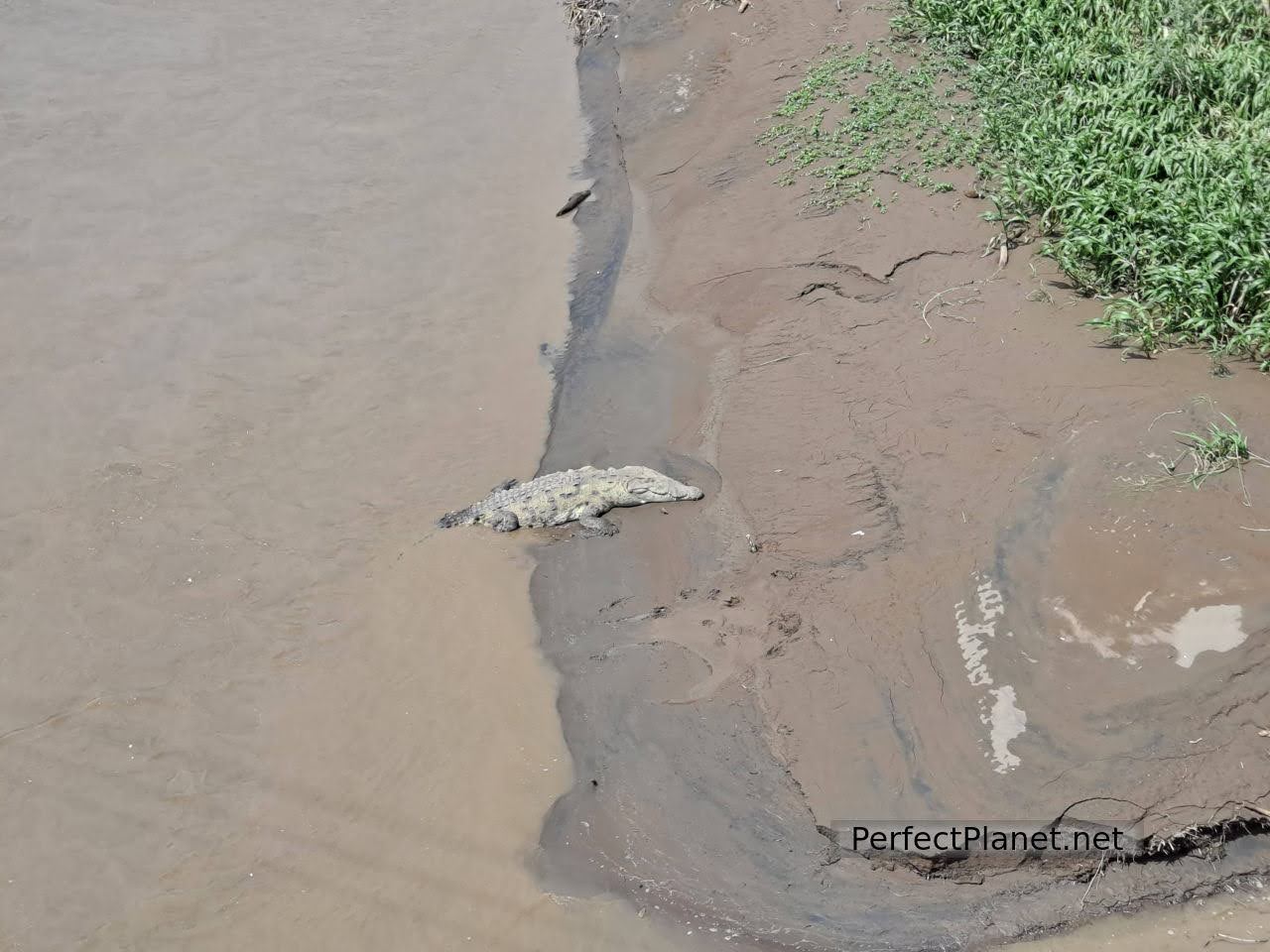
Cocodriles from Tárcoles bridge
Safety
Costa Rica is a fairly safe country, but be sure to take a few precautions. Cities such as San José and Limón have some troubled neighbourhoods that are best avoided, especially after sunset. Almost all buildings are fenced off, even private homes.
If you rent a car, leave nothing in sight and always park in safe places. It is better to pay for a parking space (as they say) than to regret it later. Our car didn't have tinted windows or a rear tray, what we did was to remove the removable base at the back to store the luggage and put the black base on top of it. Little tricks.
It is also best to avoid driving at night, the roads are sometimes not in good condition, the chances of torrential rain increase and so does the possibility of animals crossing.
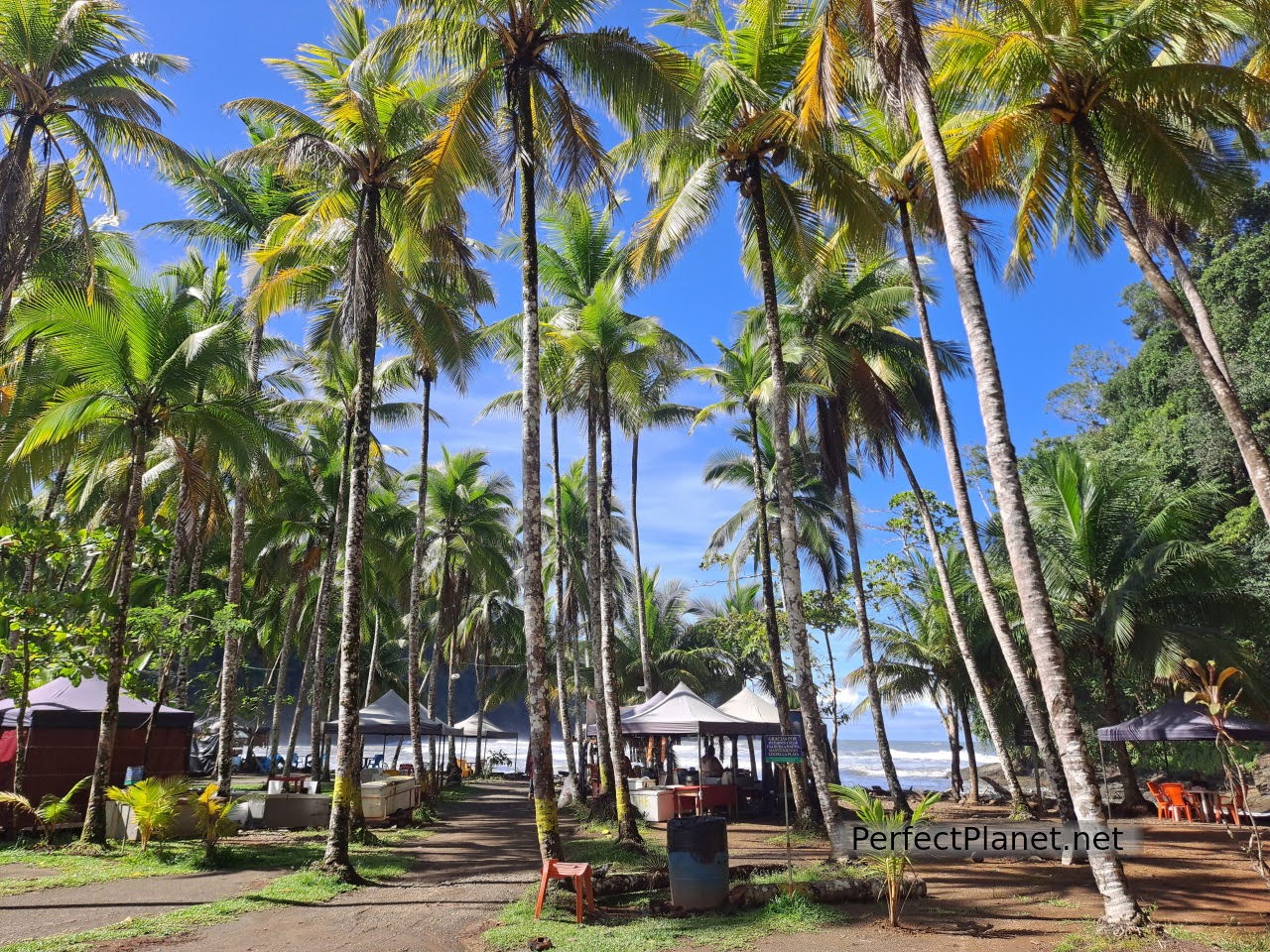
Ventanas beach
Gastronomy
Costa Rican food is really good. Although the basis of many dishes is rice and beans, the way it is cooked with so many influences from neighbouring countries makes Costa Rican cuisine a delight.
Our favourite dish, chifrijo. A base of rice, beans, bean cream, pico de gallo, chicharrón (pork, although we have also eaten shredded chicken), avocado and lime accompanied by nachos or a delicious corn basket.
The typical breakfast dish is gallo pinto. It usually includes coffee, fruit or juice. It is a dish with a base of rice and sautéed beans accompanied by tortilla (torta) or cheese or eggs and fried plantain. It's brutal and very complete. Breakfast is served from 6 to 8 in the morning.
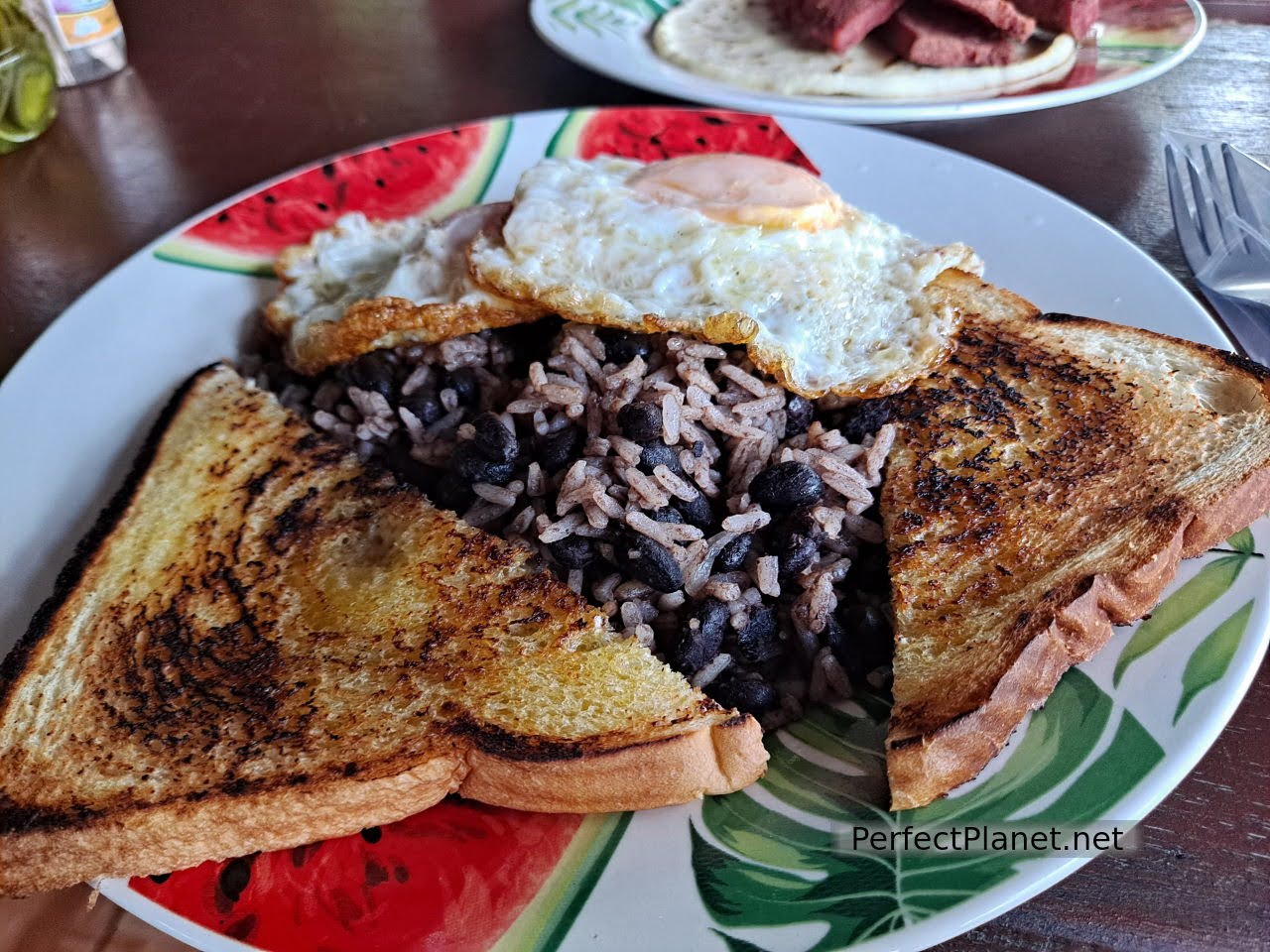
Gallo pinto
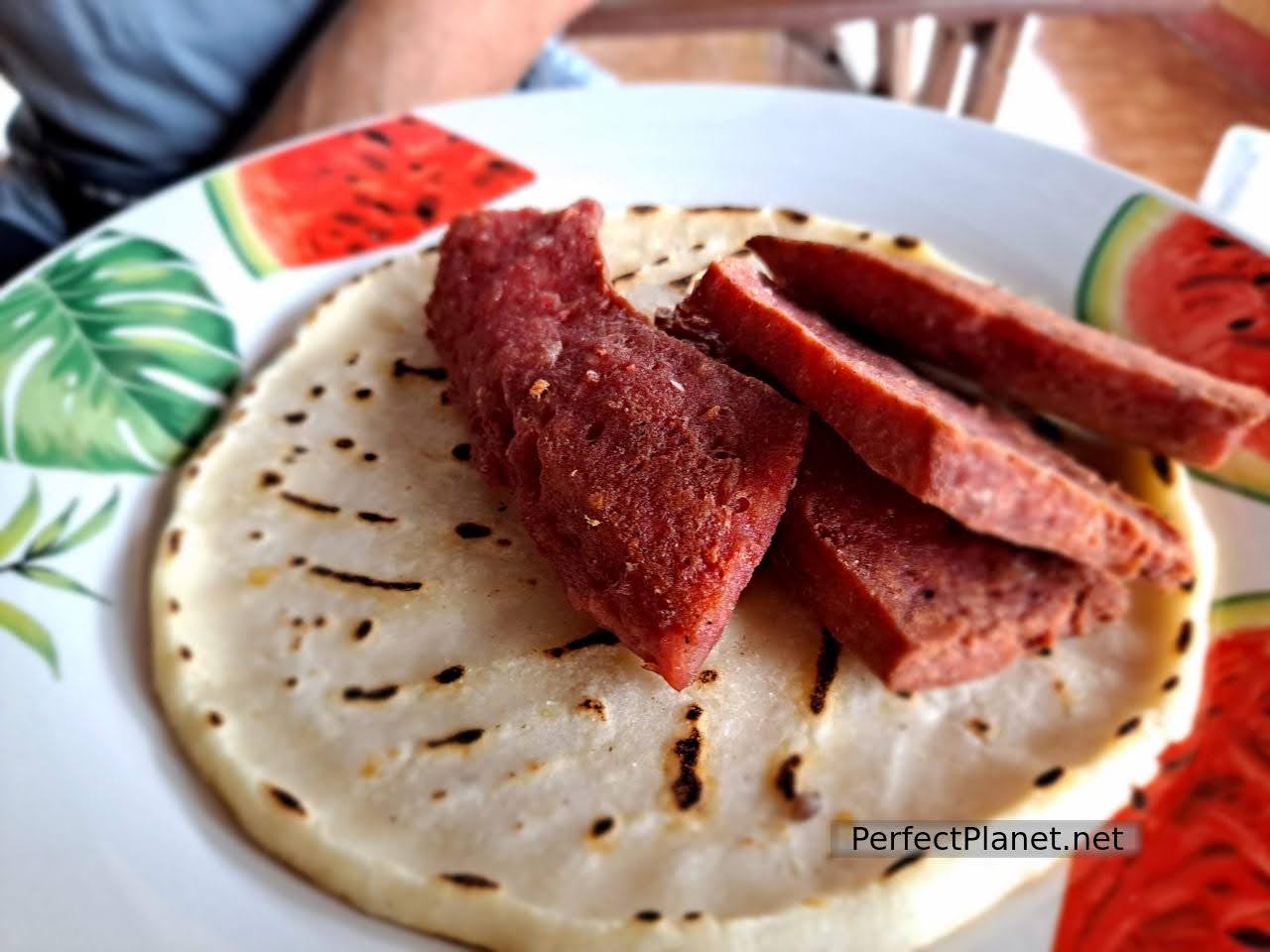
Gallo de salchichón
Casado is the typical dish for lunch and/or dinner. Depending on the area of the country they give it their own touch. It consists of white rice on one side, a different type of larger beans (but not all together), fried plantain, meat or fish as desired. In the southern Caribbean they call this dish rice and beans, mixing the rice with the beans and cooking it with coconut milk - delicious.
Ceviche is another star dish in Costa Rican cuisine. It is raw fish or prawns (they call them shrimp) marinated in citrus. Very tasty.
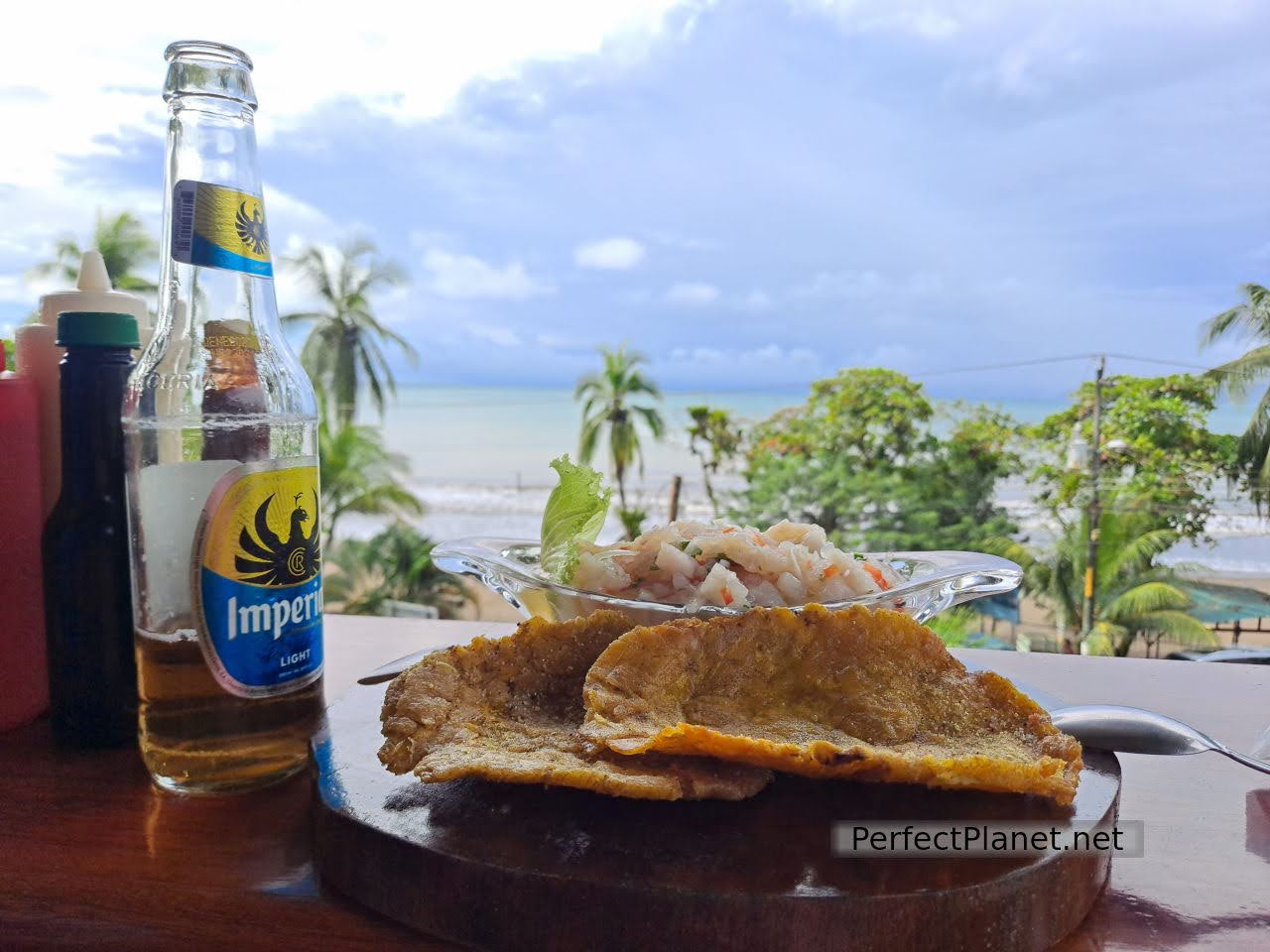
Ceviche
The juices and fruit are brutal, especially the pineapple, mango and banana. Other fruits such as ingested mamon are sold by the kilo at any stall, as well as strawberries with dulce de leche, chocolate or nothing at all. The cocoa fruit is also very tasty. When you open the fruit you suck the flesh of the seed or pulp (delicious and even addictive). The cocoa bean is what is then dried and from which pure chocolate is made.
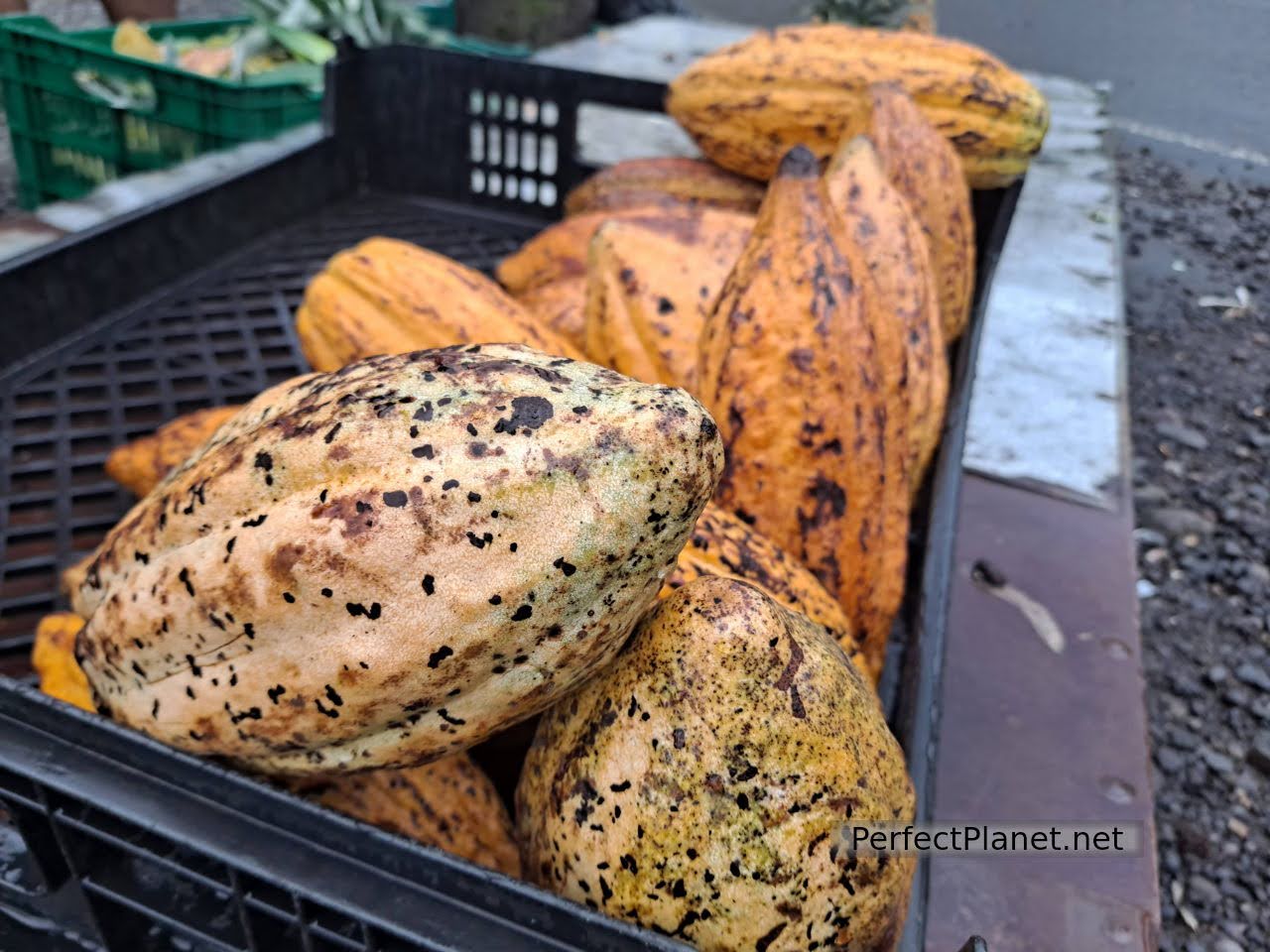
Cacoa
Other delicacies include patacón (fried ripe plantain as a pizza base or with sauces and cheese), gallo de salchichón, burritos, pizzas, fish or grilled meats. At the bar-restaurant La Juntas, in Heredia, we had a delicious grilled chicken.
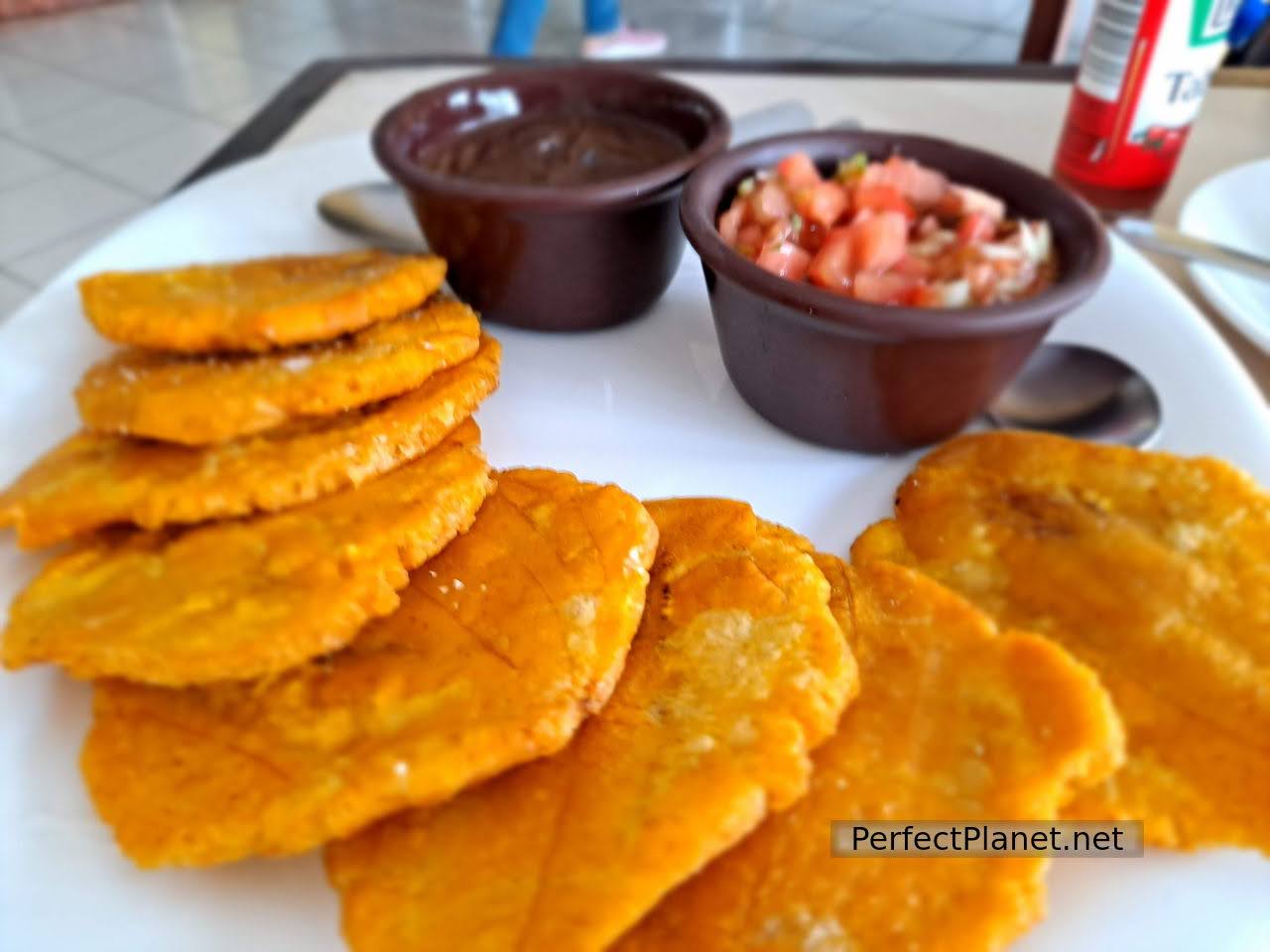
Patacón
Water is safe to drink almost everywhere in the country. Bottled water is expensive, it usually costs more than a litre of petrol and in many parks you will have trouble getting in with single-use plastics. For this reason we recommend that you bring a canteen or refillable bottle, so you save money and make your visit more sustainable.
Beer. The national beer is Imperial or Pilsen, the latter is a bit stronger. We have seen them for between 1,100 colones (2$) and 4,000 colones (6.5$), plus VAT (13%) and depending on the establishment a 10% service charge and sometimes a card payment fee.
If you visit Costa Rica in low season you don't need to book at the restaurants, in high season it should be totally different.
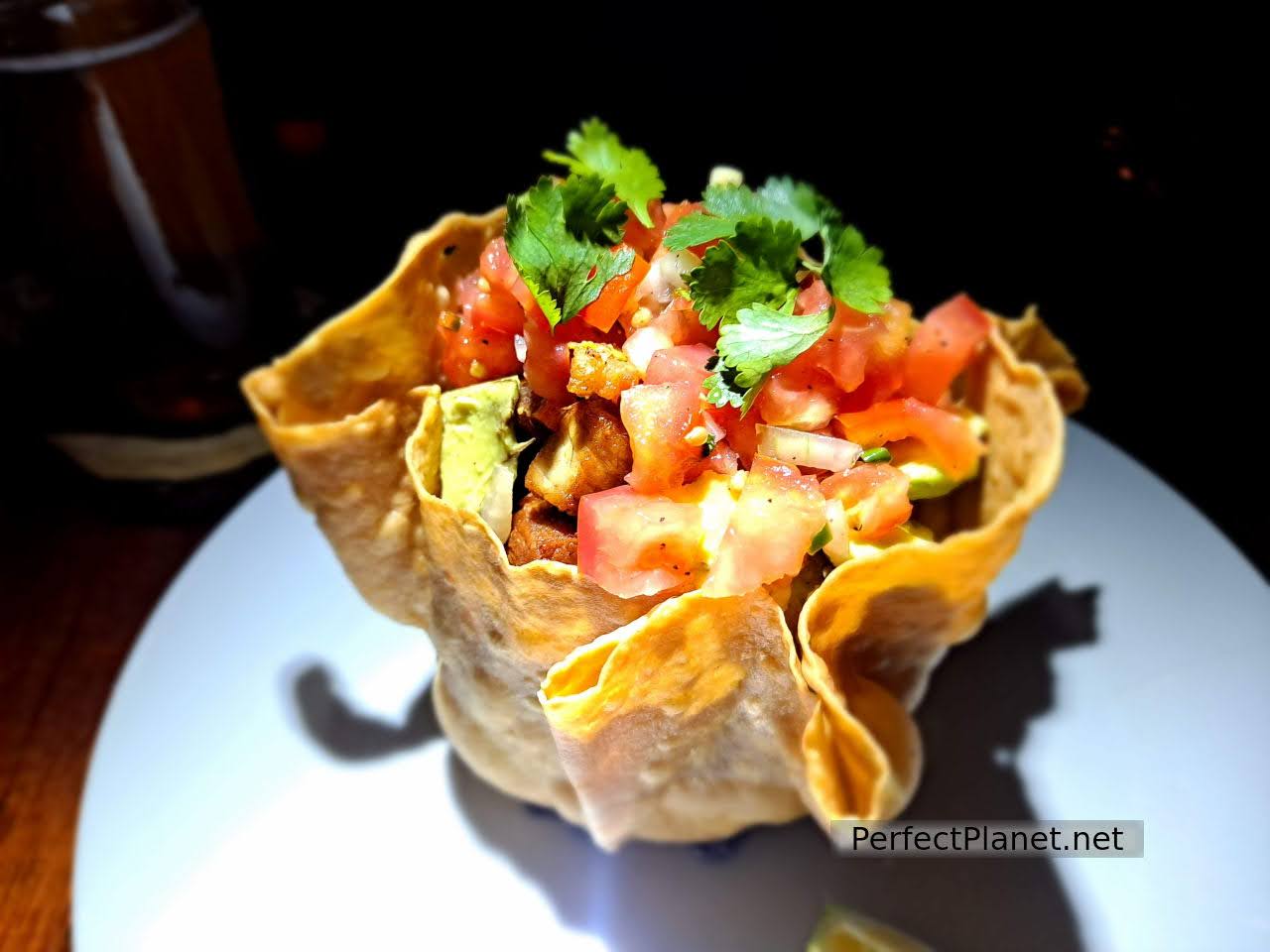
Chifrijo
Unlike in Spain, supermarkets in Costa Rica are quite expensive whether you buy imported products or not. Sometimes it's not the best option to prepare your own food even if you have a kitchen available in your accommodation. A gallo pinto or casado can cost between 2,500 and 3,700 colones, and buying a packet of bimbo bread, ham and cheese and an avocado can cost 10,000 colones. A beer can cost 1,100 colones in the supermarket and 1,300 colones in a bar.
Fruit is cheaper in greengrocers' shops and markets. In general, the Pacific coast and the north of the country is somewhat more expensive than the Caribbean coast, even for Ticos themselves.
The cheapest restaurants are known as Sodas and are good value for money. Restaurants usually charge an additional service fee.
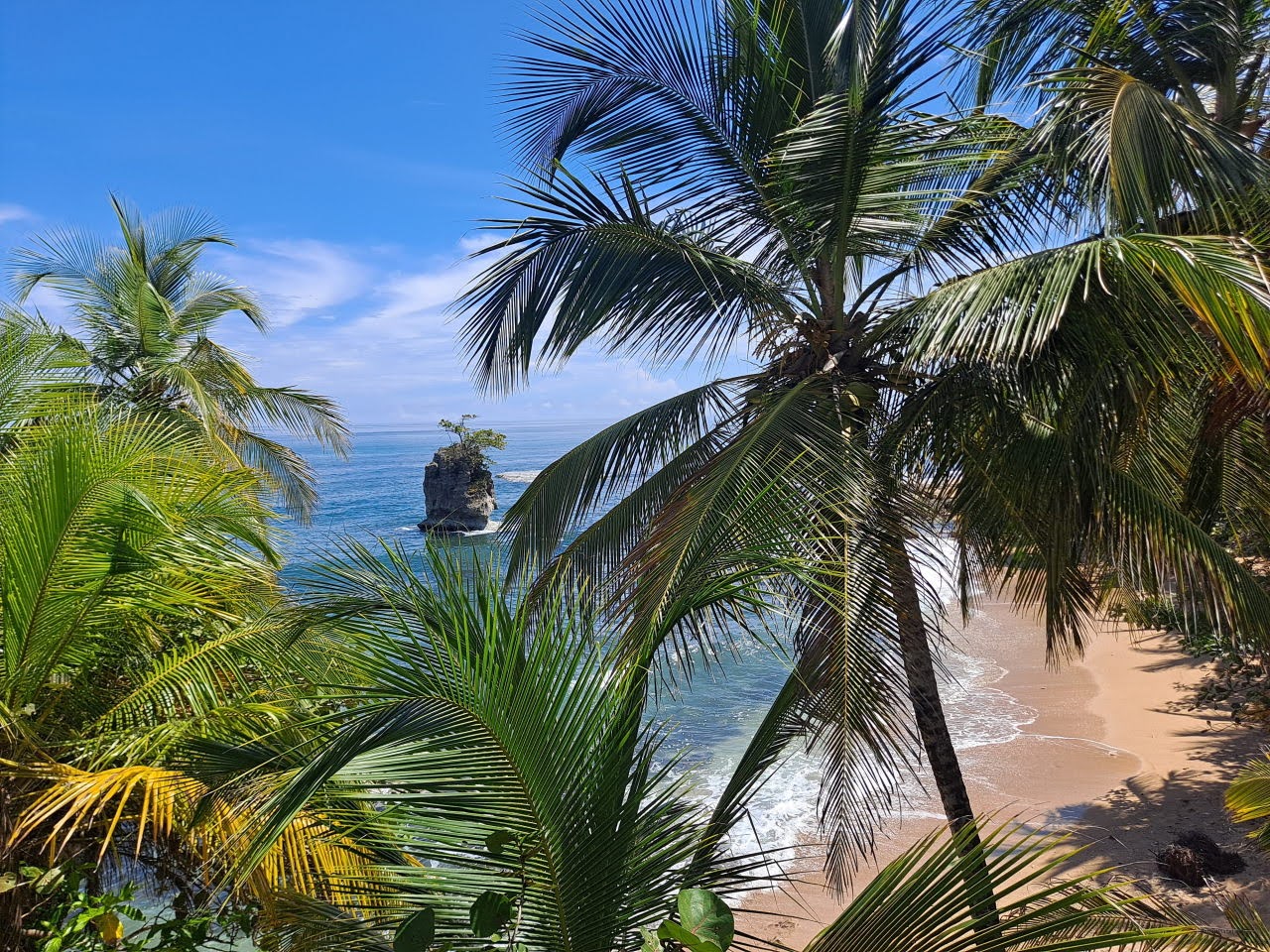
Gandoca Manzanillo Wildlife Reserve
Conectivity
Free internet and wifi are available in most parts of the country. It is true that in mountainous areas it works less well.
We bought a HOLAFLY mobile data card in Spain but were not very happy with it, as it often did not work well.
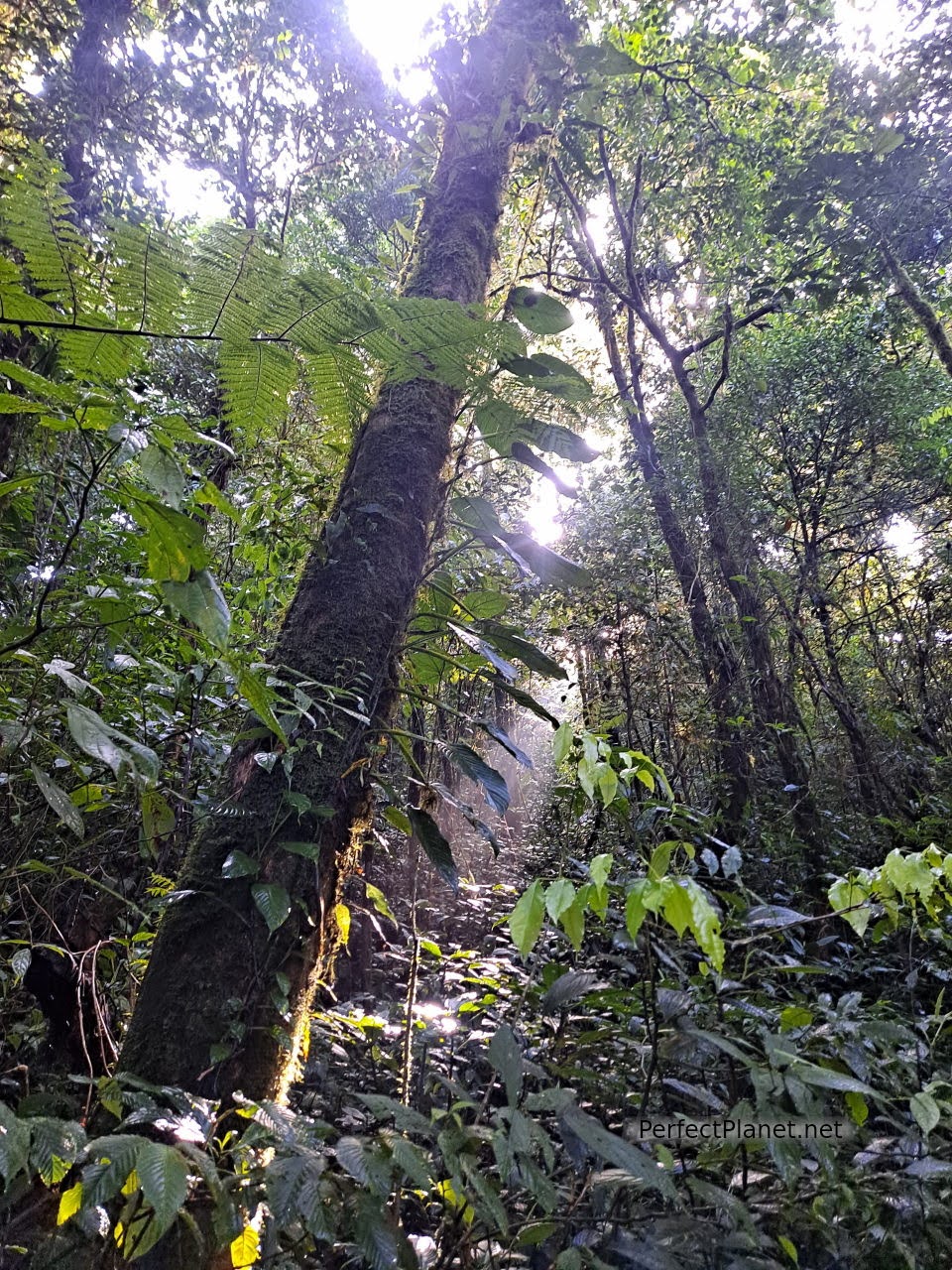
Monteverde Cloud Forest Biological Reserve
Activities
Your activities in Costa Rica are likely to be affected by the climate and/or the life cycles of the country's wildlife. It is important to take this into account when organising your trip.
To visit the National Parks, tickets must be booked online through the SINAC website, except in the southern Caribbean zone where a donation is required. The money collected from the entrance fees is distributed among the parks throughout the national territory, although Manuel Antonio is the most visited, the money is distributed for the conservation of other less visited parks.
Any activity you are going to do, whether in Natural Parks and/or Reserves, we recommend that you do it first thing in the morning if possible. In general the days start out clear but as the days progress the possibility of thunderstorms increases and it is rare that it doesn't rain from 2 or 3 pm onwards.
September is a good month to visit the Caribbean coast as it hardly ever rains and the water is amazing.
It is interesting to hire the services of a local guide to get to know in depth the flora and fauna of the place you are visiting. In some parks, such as Corcovado (Top Trail recommended) and Tortuguero (Célimo Rojas +506 8404 0804 recommended) it is compulsory.
In Costa Rica the Natural Parks are designed so that you can visit at any age and physical condition. There are trails for all tastes and many of them have footbridges or are partially paved.
The best footwear for any type of activity is a wellington boot, as they dry quickly and are waterproof.
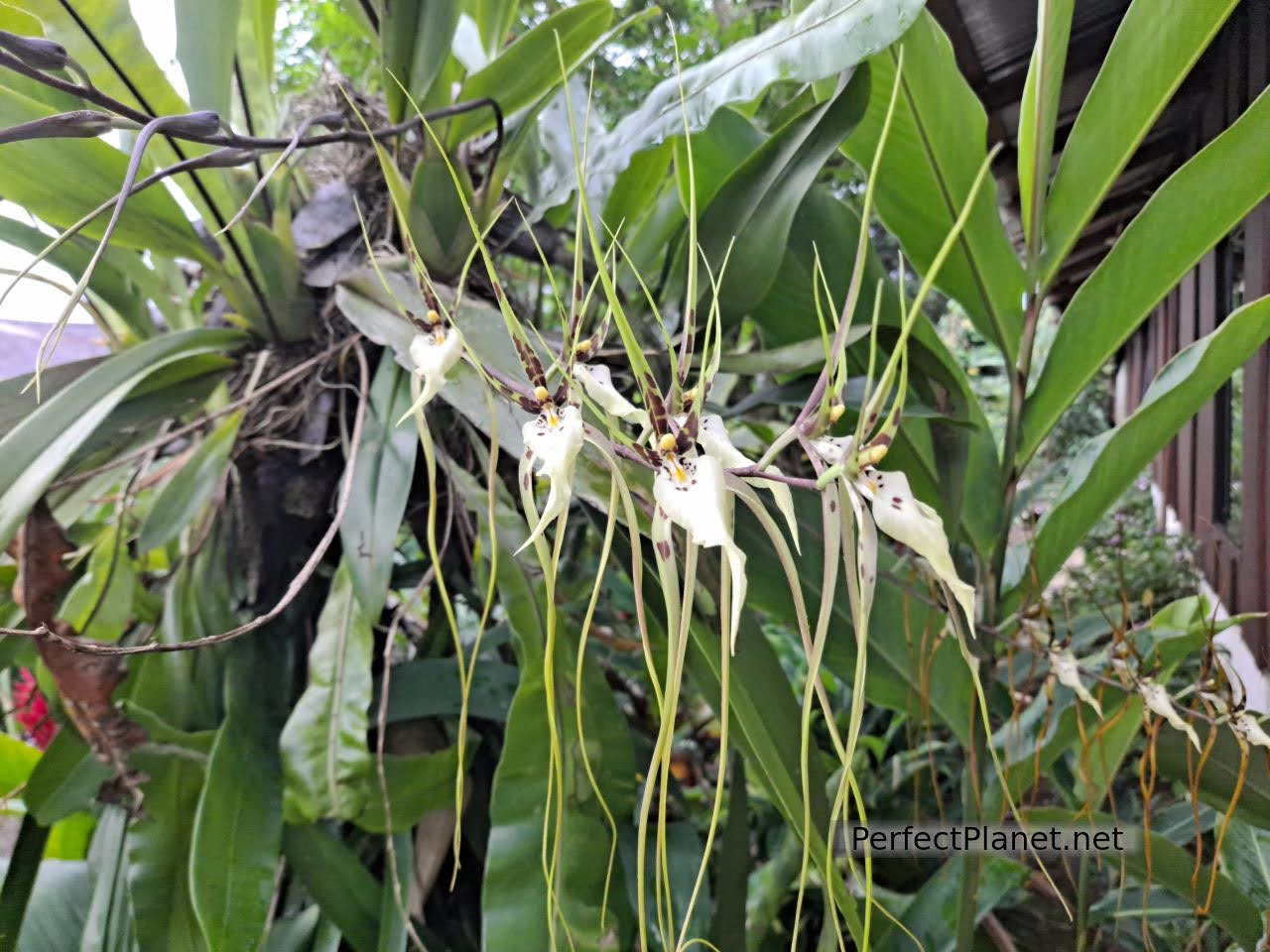
Orchids
Society
Costa Rican people are known for their kindness and gentleness. They love their land, value their homeland and culture and are very environmentally conscious.
Despite being a traditional country where the Catholic religion is deeply rooted, other religions such as Protestantism are professed.
Costa Rica has a high literacy rate, around 97%, so you can find schools in almost every village and standards are very high.
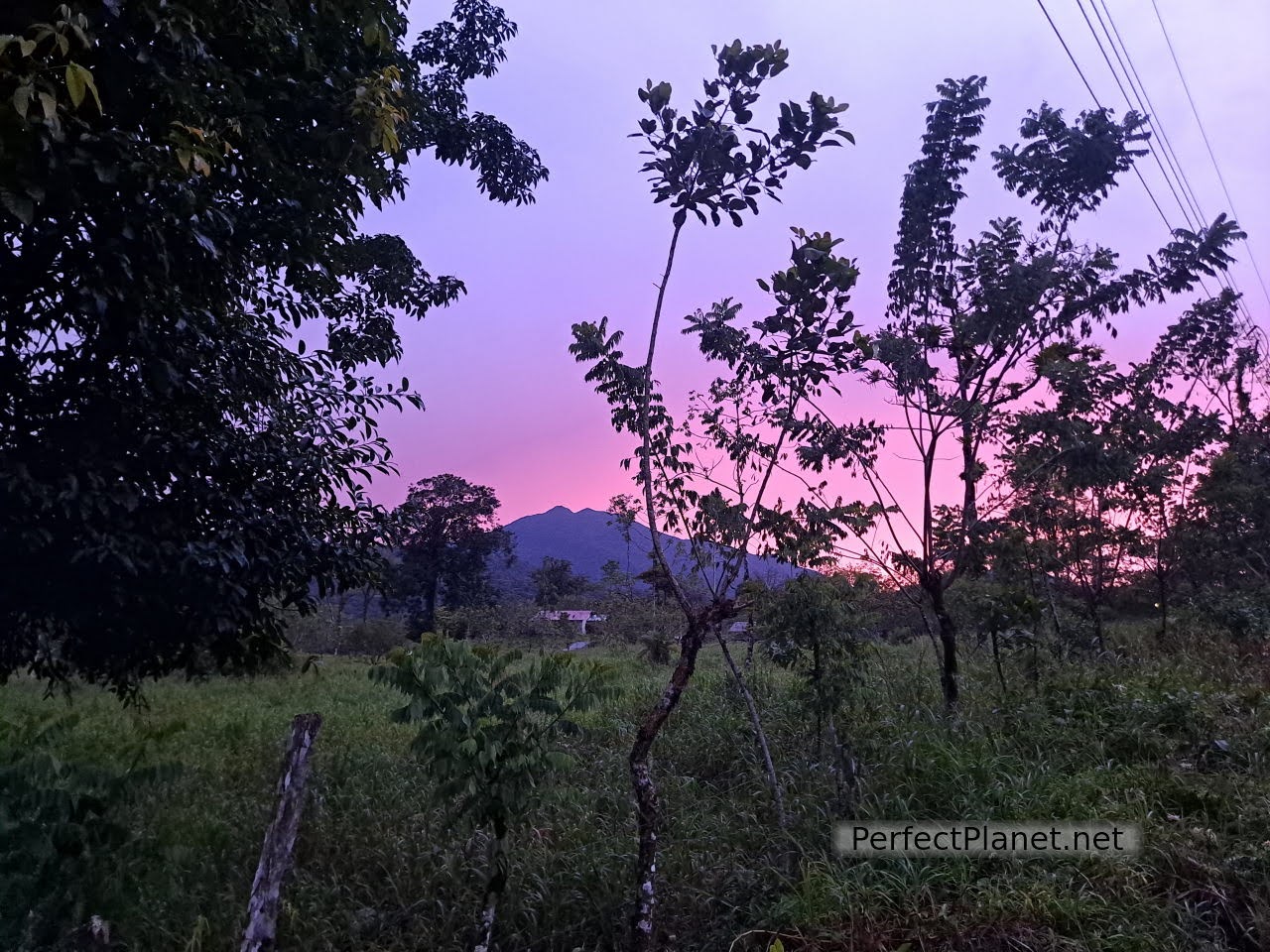
Sunset
- Log in to post comments

